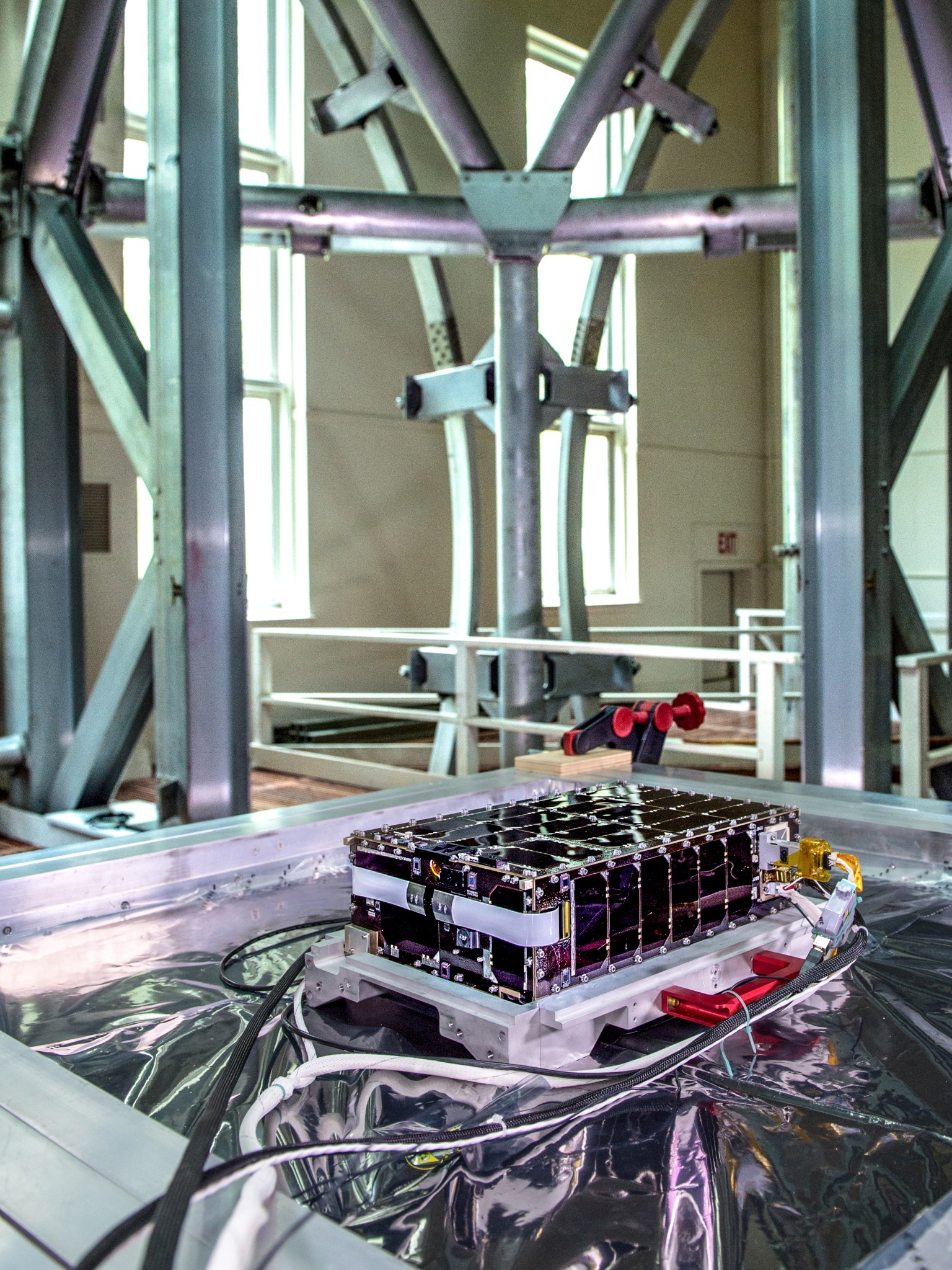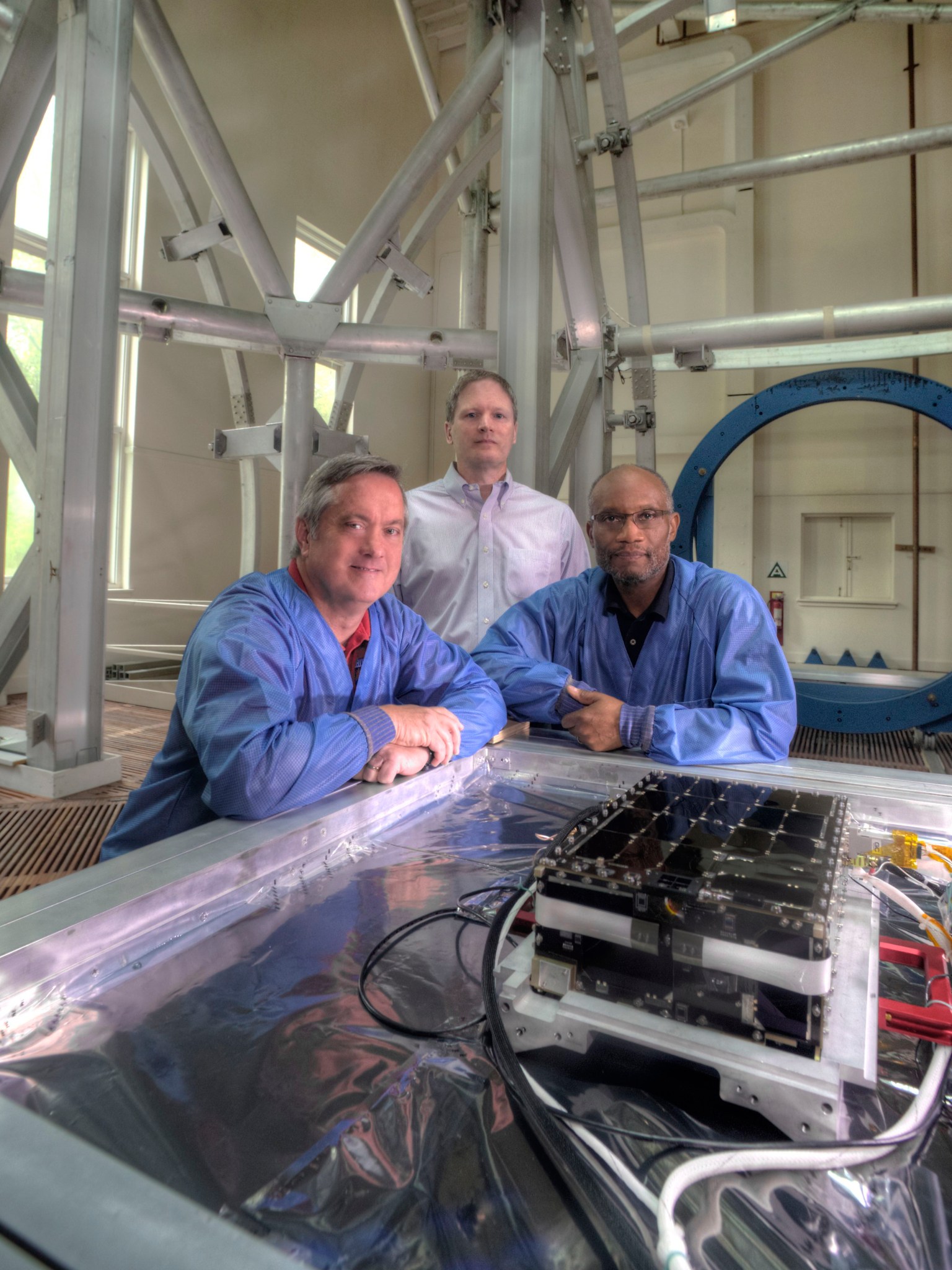NASA scientists and engineers named their new CubeSat after the mythological Norse god of the dawn. Now, just days from launch, they are confident Dellingr will live up to its name and inaugurate a new era for scientists wanting to use small, highly reliable satellites to carry out important, and in some cases, never-before-tried science.
The shoebox-sized spacecraft is set to launch in August aboard a SpaceX Falcon 9 rocket to the International Space Station where it will be deployed later into a low-Earth orbit.
Dellingr is the brainchild of scientists with the Heliophysics Science Division at NASA’s Goddard Space Flight Center in Greenbelt, Maryland, and engineers with the center’s Applied Engineering and Technology Directorate or AETD. Purposely designed to be more reliable than more widely used CubeSat platforms and relatively inexpensive, the six-unit, or 6U, Dellingr will demonstrate the vigor of its design, while gathering NASA-quality data about the sun’s influence on Earth’s upper atmosphere using a suite of miniaturized instruments and components [NASA feature detailing the instruments].
The team began developing Dellingr in 2014 in response to growing interest among NASA and other government scientists who wanted to use CubeSat platforms to carry out scientific investigations. Originally created by the California Polytechnic State University in 1999 for educational purposes, the university-class platform quickly gained popularity among universities interested in giving students hands-on experience building satellites.
In addition to their low cost, these tiny platforms intrigued scientists with their potential to fly swarms of these tiny platforms around Earth or other solar system bodies to gather simultaneous, multi-point observations — an observing technique not financially feasible with larger, more traditional spacecraft. Although they fulfilled their original academic purpose, scientists soon discovered that despite their huge potential for enabling new types of observations, the university-class CubeSat did not completely satisfy their needs.
“It was a reliability issue,” said Michael Johnson, AETD’s chief technologist, one of Dellingr’s proponents. “While adequate, university-class CubeSats weren’t consistent with what we wanted to do.” As an example, Johnson cited the experience of Goddard scientist and Heliophysics Division Chief Technologist Nikolaos Paschalidis, whose success developing a miniaturized spectrometer was marred by CubeSat failures.
With his team, Paschalidis developed the world’s smallest Ion-Neutral Mass Spectrometer for a 3U CubeSat mission that launched last year. However, soon after the spacecraft’s launch, mission operators realized the spacecraft wasn’t communicating properly, delaying the commissioning of important spacecraft functions. After about six months, Paschalidis finally confirmed his instrument’s basic functionality, but the mission abruptly ended due to computer problems.
“The mission demonstrated the basic functionality of my instrument. However, the experience put a strong emphasis on the need for a robust bus and a complete mission-operations scenario,” said Paschalidis, who is flying an improved version of his instrument on Dellingr.
Although the team believes it ultimately will succeed in its pathfinding mission, the road to launch wasn’t always smooth.
Within months of starting Dellingr, the team discovered that building a reliable, 6U CubeSat was easier said than done. Although the team wanted to keep down costs largely by using commercially available subsystems, it discovered that these components didn’t always play well together or work as advertised, requiring additional engineering and technician effort. These glitches extended schedules well past the one-year goal and drove up costs.
They also quickly learned that they would have to change the way they managed CubeSat missions to keep them affordable. “It’s a new way of doing things,” said Project Manager Chuck Clagett. “We were applying old ways to doing things to an emerging capability and it didn’t work very well.”
From the exercise, the team found a better balance between management and testing requirements and the critical need for more mission-enabling technologies, including CubeSat-specific software, Clagett said.
Just as important, the team learned the true cost of a CubeSat mission, said Goddard heliophysicist Eftyhia Zesta, who is the lead project investigator for the Dellingr magnetometers. The university-class CubeSat, developed with less rigorous design and system-engineering practices, isn’t a realistic cost for highly reliable CubeSat missions, she said.
While Dellingr’s developers await launch, they are heartened that NASA already is benefiting from their two-and-a-half-year effort to change the CubeSat paradigm. A recently selected CubeSat mission, the Plasma Enhancements in the Thermosphere Satellite, or petitSat, plans to use the second-generation Dellingr bus. The mission will study Earth’s ionosphere, the atmospheric layer that can affect the transmission of communication signals.
Credit: NASA’s Goddard Space Flight Center/Joy Ng
“We know how to build satellite buses,” said Larry Kepko, a Goddard heliophyicist who is now heading NASA Science Mission Directorate’s small satellite initiative. “All of our satellite buses last forever. We wanted to do the same thing with CubeSats, but without burdening the platform and driving up costs and extending schedules. We endeavored to transition CubeSats from an educational to a science tool. I think we did that with Dellingr.”
For more technology news, go to https://gsfctechnology.gsfc.nasa.gov/newsletter/Current.pdf
By Lori Keesey
NASA’s Goddard Space Flight Center




























